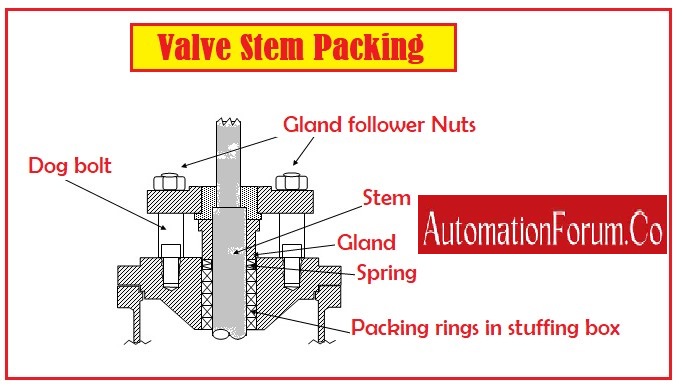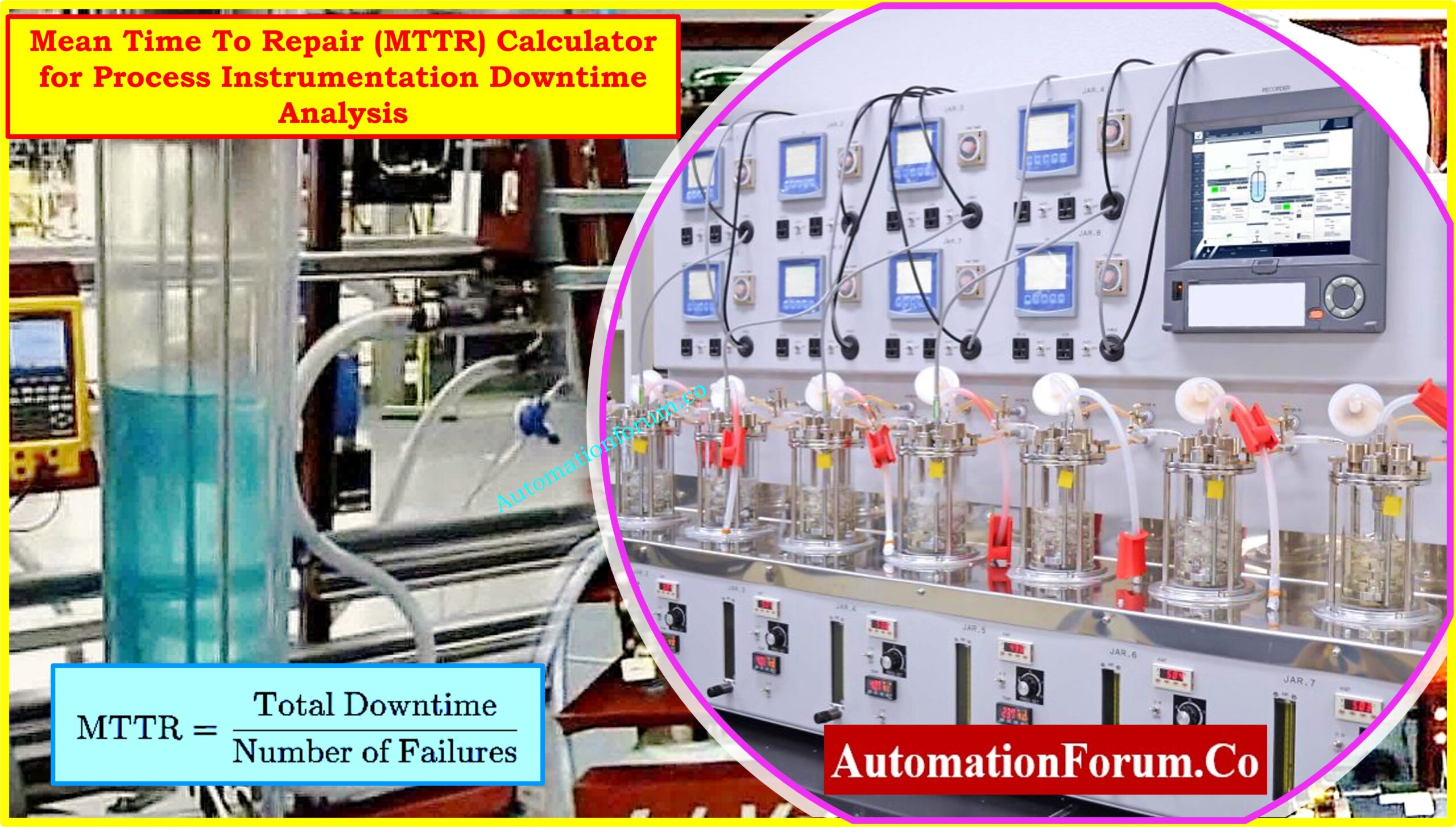Table of Contents
- What is valve stem packing and why it is required?
- Selection criteria for Control Valve Stem Packing
- Packing materials used in valves
- Teflon (PTFE) Valve Stem Packing
- Graphite Valve Stem Packing
- Types of valve packing
- Things to consider while replacing the Valve stem packing
- Procedure for replacing the Valve stem packing
- Guidelines for installing a new valve stem packing
- Regardless of the type of valves used, all control valves which are stem-actuated require some kind of sealing material to permit stem motion through an external mechanism called an actuator.
- The sealing of process fluid doesn’t allow for any leakage between the moving stem and valve body.
- A sealing mechanism for a valve stem is termed valve stem packing.
- Stem packing of the valve must be replaced after 2 to 3 years even though valves don’t have any leakage from the gland.
- It is required to minimize the operating torque of the valve and to prevent stem scratches.
- Generally, valve packing must be thick, about 50% of the variation between the diameter of the valve stem and the interior diameter of the stuffing box. But thinner vale packing is not best suited.
- Inspecting the packing chamber and the valve stem is essential because both should be clean from burrs, pitting, scoring, or corrosion on their surface.

What is valve stem packing and why it is required?
- Valve stem packing is a self-developing packing material.
- It shapes all surfaces and irregularities such as scratches and pits.
- It is composed of 100% pure Teflon (Poly-tetra-fluoro-ethylene) and it has maximum tensile strength.
- These products are self-lubricating and eradicate valve stem wear.
- It doesn’t include any impurities and it is not affected by any chemicals.
- The temperature range varies from -260 Degrees Celsius to +287 Degrees Celsius.
- The shelf life of valve stem packing is unlimited, so stocking is easy.
- Teflon or PTFE valve stem packing and Graphite valve stem packing are used for valves, faucet stems, rotating shafts, reciprocating plungers, flanges, and stuffing boxes.
- The graphite product mixed with PTFE provides additional lubrication.
- Valve stem packing is a kind of seal necessary for all control valves, and the seal moist the leakage between the valve housing and moving stem.
Selection criteria for Control Valve Stem Packing
Selection of the right device to carry valve packing to avoid damage like scratches on the valve stem, and valve packing chamber or stuffing box.
Few main criteria for the selection of control valve stem packing.
- Chemical resistance,
- Stem movement (speed),
- Pressure in the flow system,
- Medium temperature.
Packing materials used in valves
- The most commonly used packing materials are Teflon (PTFE) and graphite.
- Graphite is a ceramic material, while Teflon is a polymer.
- Compared to graphite, Teflon is better with regard to fluid sealing, stem friction, and stem wear. Teflon has a good resistance to attack from a wide variety of chemical substances.
- Teflon has a limited temperature range and it cannot resist extremely high nuclear radiations which makes it unstable for use in nuclear power plants.
- Along with Teflon, graphite is also considered a self-lubricating packing material.
- Graphite has a temperature range than Teflon, it is capable to resist harsh nuclear radiation, and it is suitable for use in nuclear power plants because it generates much more stem friction compared to Teflon.
Teflon (PTFE) Valve Stem Packing
| Item Number | Size |
|---|---|
| 90008 | 3/32″ x 8″ |
| 90021 | 3/32″ x 21″ |
| 90024 | 3/32″ x 24″ |
Graphite Valve Stem Packing
| Item Number | Size |
|---|---|
| 90001 | 3/32″ x 24″ |
Types of valve packing
The valve stem packing is grouped into,
1. Chevron valve packing:
- Teflon or rubbers are common materials used for chevron rings.
- Teflon or rubber packing rings are moulded to a V shape and placed in the stuffing box.
- Chevron packing is widely used in hydraulic and pneumatic systems.
- The process pressure pushes the chevrons’ edges outwards against the shaft and stuffing box wall to produce a good seal.
2. Rope or Ring type packing:
- There are various styles of Rope type packing.
- Teflon Asbestos or graphite asbestos are common materials used for Ring type packing
- The rings are holed at the centre for lubrication into the space between the ring and the stem.
- Silicon grease is used for lubrication
Things to consider while replacing the Valve stem packing
- The large quantity of leakage from the gland is the most common indication of stem packing.
- The valve stem packing should be replaced if the leakage can’t be controlled by adjusting the gland follower.
- The valve stem and valve packing chamber must be properly and carefully cleaned to avoid scratch formation.
- The valve must be locked following actual procedures by checking the specifications provided by the manufacturer before replacement.
- Ensure that the previous packing must be replaced with the right size and type.
Procedure for replacing the Valve stem packing
- Release the gland follower nuts.
- Turn and open the gland follower dog bolts.
- Open or remove the gland follower in case of split type.
- Remove the first few packing rings by using a packing tool, here this tool functions like a corkscrew.
- Do not scratch the shaft with the packing tool.
- Remove the lantern ring by using a piece of wire bent into a hook, if provided.
- Now remove the remaining packing rings by using a packing tool and ensure all packing scraps have been removed.
- Observe the previous packing done years before and the shaft for any major reason for leakage or if it is sapped.
Guidelines for installing a new valve stem packing
- Ensure that the exposed or outermost part of the shaft is completely cleaned because it is important to get free from all the dust particles so that they are not forced to enter into the stuffing box with the new packing.
- Use a non-flammable or non-toxic solvent to clean the shaft and stuffing box.
- Brush down and wipe the area using a clean cloth or cotton waste.
- If information is not provided by the manufacturer then measure.
- The thickness of the lantern ring,
- The gap between the shaft and the packing chamber.
- Depth of the stuffing box.
- Calculate the number of rings required.
- Find a suitable rod or pivot such that the diameter of the shaft must be the same.
- Wind the packing material around the rod or pivot with more turns as the number of rings required.
- Cut the rings using a sharp knife or another fine-cutting tool.
- Check the required number of rings to be turned below the lantern ring.
- The number of rings must be the same as the previous packing so that the lantern ring will be in line with the lubricator.
- Lubricate the rings by applying anti-seize oil or compound, so that the ring will go more easily.
- Finally insert the packing rings and lantern ring one by one, forcing them into the stuffing box as much as possible.
- The ring joints must wobble and cut on a slant.





